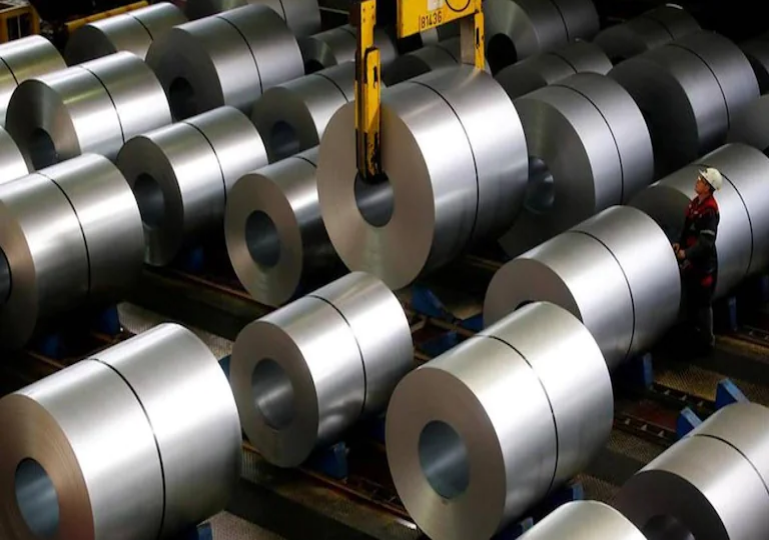
Amid a shortage of coal in the country, many non-power industries face a threat to their operations. This could prove to be a jolt to the manufacturing sector, which was recovering from the pandemic-induced lows.
As the coal supply shortage threatens possible power outages in India, many non-power industries, ranging from steel to oil refineries, also face a threat to their operations.
Coal is the primary fuel powering 70 per cent of India's energy consumption. As of October 11, over 80 per cent of the 135 coal-fired power plants in India have less than four days of stocks left, according to the data by the Central Electricity Authority.
Even as the central government has assured that there is no coal shortage, several states have reported a shortage and complained of a possible power outage in the coming days.
The power crisis could prove to be a jolt to the manufacturing sector, which was recovering from the pandemic-induced lows.
The situation looks grimmer as Coal India, in a release on Wednesday, asked its subsidiaries to prioritise the power sector in distribution of coal and refrain from conducting any further e-auction of coal till the situation stabilises.
Here are some of the key industries that could be affected due to the looming energy crisis:
Iron
With the prices of imported coal reaching a record high, commodities such as iron, steel, and aluminium could see a rise in production costs and scaling down of operations.
Due to the current situation, the domestic sponge iron producers could pass on the cost-increase to end users, said Ritabrata Ghosh, Assistant VP and Sector Head, Corporate Sector Ratings, ICRA.
"While the price of domestic coal has increased by an estimated 15 per cent between July and October of 2021, the rally in imported coal prices has been much steeper, with prices reaching all-time high levels, and registering a sharper increase of 61 per cent between July and October of 2021. This is expected to result in an increase of about USD 75/MT between this period for a domestic sponge iron producer," Ghosh said.
Decoded | Is India alone staring at power crisis?
Although manufacturers have been able to partly pass on this cost-increase to customers (12 per cent increase in sponge iron realisations since July), the gross contribution of such players is estimated to be lower by around Rs 1,800/MT in October 2021 compared to levels prevailing in July 2021, Ghosh said.
"This suggests that margins would come under pressure in the second half of FY2022 unless manufacturers roll out further price hikes," Ghosh said.
"For an integrated billet manufacturer having facilities for captive sponge iron, waste heat recovery power generation, and captive power plant, between July and October of 2021, the extent of cost increase due to this coal price rally is estimated to be around USD 60/MT," he added.
Steel
As some big steel producers have their power plants, they are currently not facing any power crisis. However, market players say the next two months will be critical for steel producers unless the current shortage is met.
However, smaller mills that use electricity supplied by power plants for their smelting operations could face production cuts if they witness extended power outages.
"While the prices of steel billets too mirrored the trends in sponge iron (increasing by 11 per cent between July and October of 2021), the hikes for billet manufacturers have been adequate to absorb the full cost increase due to coal shortage," said Ghosh from ICRA.
Oil refineries
After coal, oil and natural gas are the biggest sources of power generation in India. With utilities facing a shortage of coal, oil refineries might see a rise in demand.
Big oil refineries in India are not directly dependent on coal as they operate their captive power plants. While they are not likely to face any power shortage anytime soon, the increased demand might lead to LNG imports, prices of which have also surged in the international market.
Small manufacturing units such as plastic and synthetic rubber, which do not have their power units, could run their operations using diesel generators. However, this could add to their cost as the prices of fuel are already high.
Frozen food
The frozen food industry, which requires refrigeration, is among the most vulnerable sectors given the power shortage. While the industry can rely on diesel generators in case of grid power outages, high fuel prices could inflate their costs and affect profits.
The poultry, meat and dairy industry could also face the same situation in case of a power shortage.
Brick kilns/Cement
A majority of brick kiln makers in India use imported coal as fuel. With the coal prices soaring in the international market, brick kilns could fall back on domestic coal supply to meet their demands. This could tighten the domestic coal supply further, given that brick kilns provide a primary raw material required all year round.
Situation expected to improve from November
Even as many power plants and non-power commodities face a coal shortage, the situation could improve from November, said Sabyasachi Majumdar, Senior Vice President and Group Head, Corporate Sector Ratings, ICRA.
"We expect the coal availability to improve gradually during October month with an expected ramp-up in both coal production and dispatch levels, also given the seasonality in energy demand moderation expected from November," Majumdar said.





















